If you’re looking to improve your core and arm strength, side plank dips are an excellent exercise to add to your routine. This exercise effectively targets your core muscles, particularly your obliques.
The side plank with hip dips is a brilliant bodyweight exercise that you can do at home.
It is a strength-building exercise that engages a range of muscles and can help boost your calorie burn and lose weight.
In this blog, we will discuss how to do side plank dips, their benefits, and how to incorporate them into your abs workout routine. We will also provide tips for proper form and common mistakes to avoid.
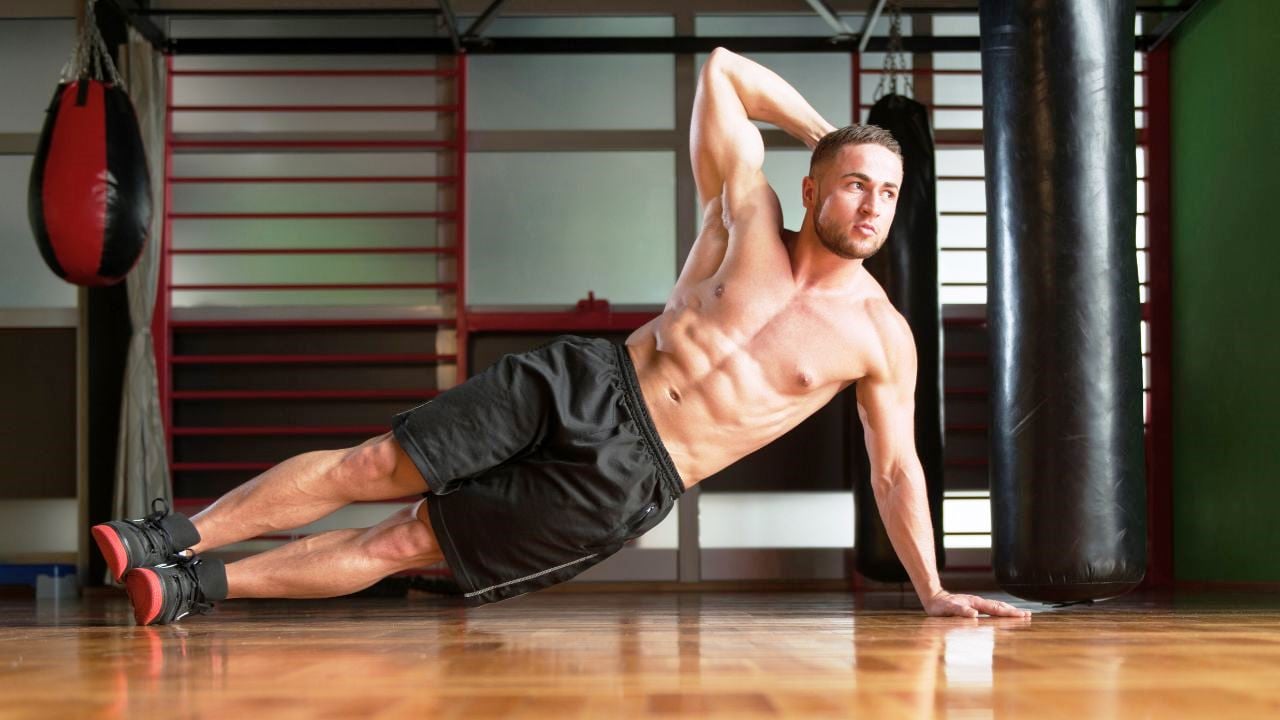
- What is Side Plank Dips
- Muscles Worked During Side Plank Dips
- How to do Side Plank Dips
- Form and Tips For Side Plank Hip Dips
- The Benefits of Plank Hip Dips
- 1. Toned Belly
- 2. Reduce Back Pain
- 3. Improve Your Balance and Posture
- 4. Flexibility
- 5. Versatile Exercise
- Side Plank Dip Modifications
- Beginners
- Advanced Plank To Push-Up
- Best Alternative Of Side Plank Dips
- Side Plank with Hip Abduction
- Tree Side Plank
- FAQs
- What do side plank dips work?
- Do side planks strengthen your hips?
What is Side Plank Dips
The side plank dip is also known as the side plank hip lift that you can do to target the obliques and outer thighs.
The move involves holding yourself up in a side plank position and then lowering your hips.
Planks work your obliques and trim your waistline. With the extra dip, you will improve your muscle control and posture.
Additionally, there are variations of side plank dips that can make the exercise more challenging and engaging.
- To make the exercise easier, support your lower body on the side of your knee instead of your foot.
- Make the exercise more difficult by holding a weight on your hip.
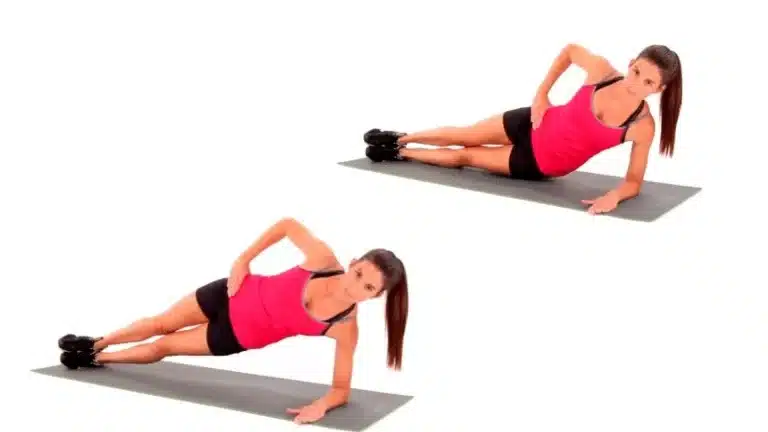
Know More Body Fat %: Use Our Free Body Fat Calculator
Muscles Worked During Side Plank Dips
The Side plank dip position makes an effective component for your workout, as it engages a wide range of major muscle groups.
- The primary muscles worked are the obliques and back, including the erector spinae, abs, and the transverse abdominus, as well as the gluteus maximus and hip flexors of the lower body.
- In addition, the move uses the serratus anterior, trapezius (traps), rhomboids, shoulder muscles.
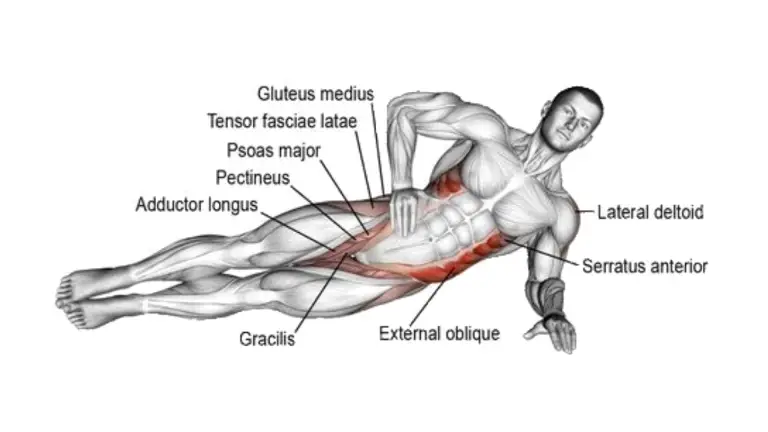
How to do Side Plank Dips
A step-by-step guide on how to do this.
- Lie on the floor on your left side with your elbow directly beneath your shoulder and legs stacked.
- Place your free hand on your hip.
- Straighten your body and legs. Your feet should be together, and your hip should be resting on the floor.
- Brace your abs and lift your hips off the floor until you’re balancing on your forearm and feet and your body forms a diagonal line.
- Slowly bring your hips back to the floor. Repeat on your right side.
Note: Choose your sets and repetitions based on your ability to maintain good form throughout. Begin by performing 3–4 sets of 6-8 reps.
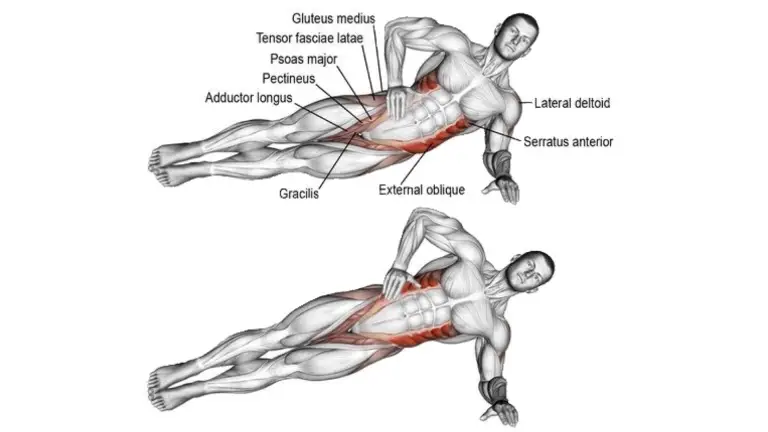
Use our free calculator to know your weight loss calories requirement.
Form and Tips For Side Plank Hip Dips
The most important aspect of planks is maintaining proper alignment.
- Warm up with a full-body loosening exercise, such as jogging or jumping rope, before your workout.
- Keep your abdominal muscles tight and breathe regularly throughout the exercise. Do not let your body rotate.
- Your elbow should be lined up under your shoulder to prevent shoulder strain.
- Use an exercise mat under your arms to increase comfort and stability.
- Avoid resting your hip on the floor at the bottom of the dip.
- A plank dip should be done slowly and controlled, and it can be done daily.
- Squeeze your abs and glutes throughout the movement for stability.
The Benefits of Plank Hip Dips
This exercise improves the strength of your abs, obliques, lower back, and glutes and helps to trim down your waistline. Several other important benefits of practicing it include:
1. Toned Belly
The planking exercise will help you build your core muscles. As you gain strength in your abdominal muscles, your mid-section will tighten.
2. Reduce Back Pain
The plank dips help reduce back pain because they strengthen your core, which will reduce back pain. They also help strengthen your upper back muscles.
3. Improve Your Balance and Posture
As a balancing exercise, a side plank dip can help improve your sense of balance and coordination. This exercise can help you improve your posture.
4. Flexibility
Planks are also a great way to build strength and flexibility in your posterior muscles. Doing this exercise over time makes your core muscles stronger.
5. Versatile Exercise
The main advantage of side plank dip is the variety of possible exercises. It is suitable for everyone, regardless of their fitness level.
This exercise doesn’t require any special equipment and can be performed anywhere.
Side Plank Dip Modifications
There are several ways to modify the plank dips to work the core muscles and build strength and stability. There are also ways to change it if you are a beginner or advanced.
You can choose from different levels of plank to suit your fitness level.
Beginners
If you’re just starting out, you could also drop onto your knees to do a modified side plank. As you build up strength, you’ll be able to perform the full exercise on your toes.
Advanced Plank To Push-Up
You could try adding a weight to make this exercise more challenging. Try to do dumbbell side plank hip dips.
You can make it more difficult by increasing the bench inclination and doing feet-elevated side plank dips. But focus on form while doing the same.
To Stay Motivated: 150+ Gym Workout Motivational Quotes To Stay Fit
Best Alternative Of Side Plank Dips
Side Plank with Hip Abduction
The side plank hip abduction is an advanced variation of the side plank exercise that you can do to target the obliques and outer thighs.
The hip abductors move your legs away from your body and turn them at the hip joint. This helps keep your knees and hip joints stable.
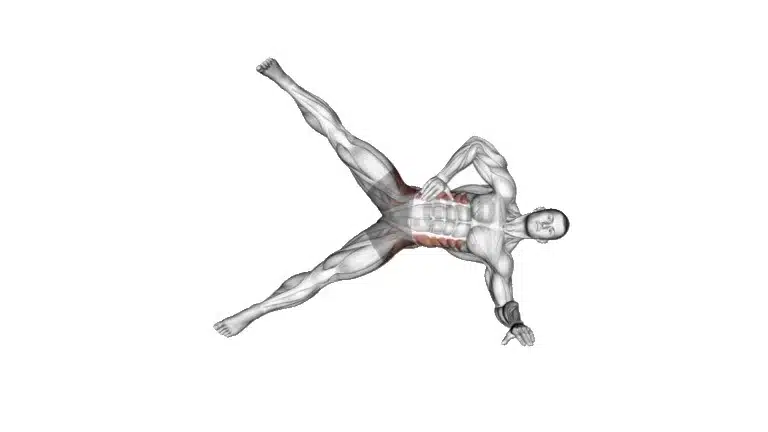
Tree Side Plank
Side plank poses with tree legs are a more advanced variation of the balancing pose, side plank pose.
In this posture, the body forms one straight line, side-on to the ground. It is supported by one hand and the outer edge of one foot.
The other leg forms a tree leg shape, with the sole pressed into the inner thigh or calf.

FAQs
What do side plank dips work?
Side plank hip dips primarily work on the obliques, back, and abs, as well as the glute and hip flexors. In addition, the move also works on serratus anterior, traps, and deltoid muscles.
Do side planks strengthen your hips?
Yes, the side plank helps strengthen your hips, but if your main focus is on strengthening the hips, then you should add side plank hip dips to your workout regime.

Manish brings over 10 years of hands-on experience in weight lifting and fat loss to fitness coaching. He specializes in gym-based training and has a lot of knowledge about exercise, lifting technique, biomechanics, and more.
Through “Fit Life Regime,” he generously shares the insights he’s gained over a decade in the field. His goal is to equip others with the knowledge to start their own fitness journey.
